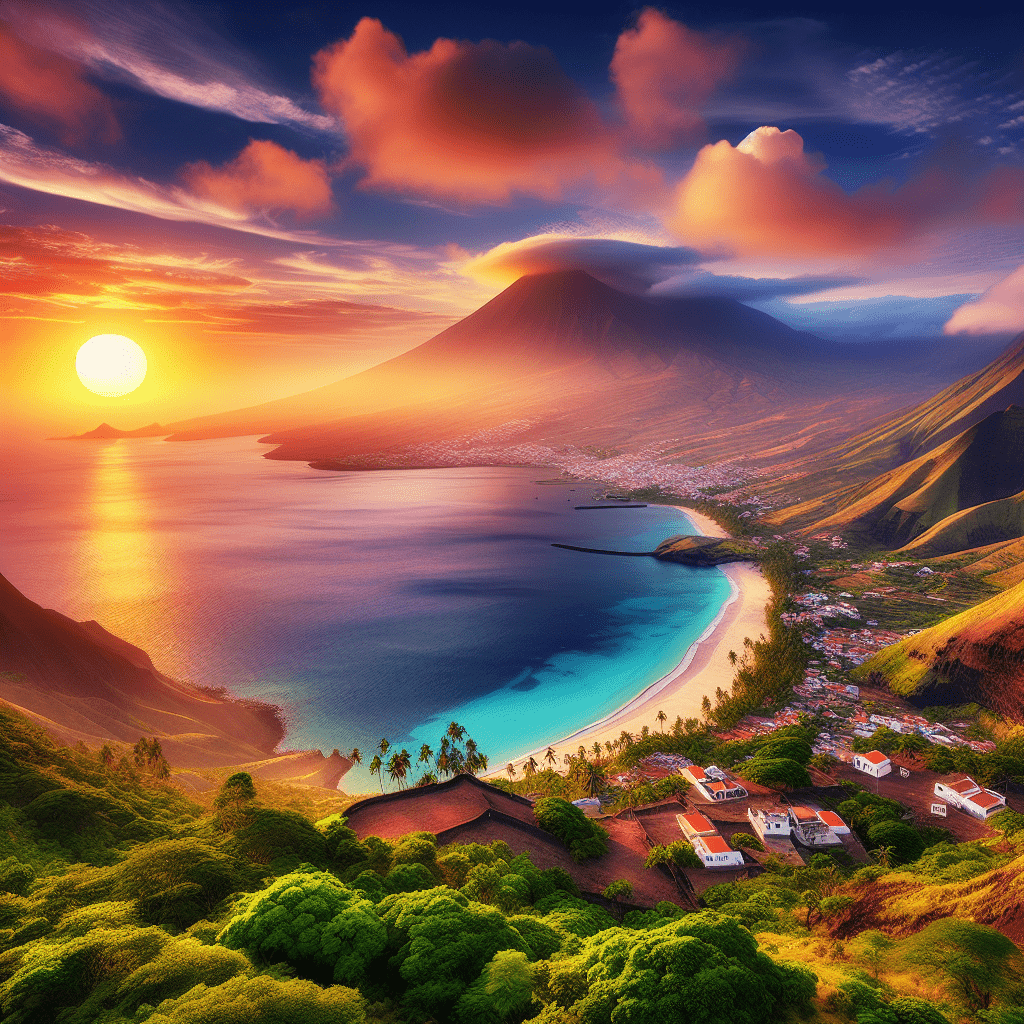Introduction to Cape Verde
The Republic of Cabo Verde, or Cape Verde as it’s widely known, is an enchanting archipelago nation located off the northwest coast of Africa. Consisting of ten islands and five islets, Cape Verde, despite its small size, boasts a rich blend of Portuguese and African cultural heritage and a diverse array of landscapes – from verdant mountains, to a volcanic terrain, to golden beaches. This unique interplay of natural diversity, vibrant culture and history make it a fascinating subject to delve into.
Geography of Cape Verde
Situated in the central Atlantic Ocean, about 570 kilometers west of the coast of Senegal, Cape Verde is part of the Macaronesia ecoregion, along with the Azores, Canary Islands, Madeira, and the Savage Isles. The country spans a combined area of approximately 4,033 square kilometers, making it slightly larger than the state of Rhode Island.
The archipelago is divided into two island groups: the Barlavento Islands (windward) to the north and the Sotavento Islands (leeward) to the south. The Barlavento group includes Santo Antão, São Vicente, Santa Luzia, São Nicolau, Sal, and Boa Vista, while the Sotavento group comprises Maio, Santiago, Fogo, and Brava. The islands vary significantly in terms of landscape and climate, with some being flat and arid, others mountainous and verdant, and a few with remarkable volcanic terrain.
History of Cape Verde
Cape Verde was first discovered by Portuguese explorers in the 15th century who found the islands uninhabited. The strategic location of Cape Verde, midway between Africa, Europe, and the Americas, made it an important center for the Atlantic slave trade. This history cemented Cape Verde’s enduring ties with Africa and Europe, a relationship that can be seen in its blended cultural and ethnic composition today.
The country officially became a Portuguese colony in 1495, and it wasn’t until 1975 that Cape Verde gained independence after a long struggle for liberation. Following independence, Cape Verde underwent a period of political transformation, moving from a single-party socialist system to a multi-party democratic system in the 1990s. Today, Cape Verde is lauded for its stable democracy and economic growth.
Culture and People of Cape Verde
Cape Verdean culture is a beautiful intertwining of African and Portuguese influences, visible in everything from its cuisine, music and dance to religious practices and social norms. The official language is Portuguese, but most Cape Verdeans also speak Creole, a language derived from both Portuguese and West African languages.
Music, specifically a genre called Morna, is the soul of Cape Verdean culture. Morna is a heartfelt style of music similar to Portuguese Fado, with Cesaria Evora being one of its most renowned performers.
Despite the varied economic challenges, Cape Verdeans are known for their warmth and hospitality, which is deeply rooted in their unique culture of ‘morabeza’ – a term that encapsulates the spirit of kindness, friendliness and hospitality that is characteristic of the Cape Verdean people.
Economy of Cape Verde
Cape Verde’s economy is service-oriented with a significant focus on tourism and foreign investment. The country’s captivating natural beauty, unique cultural flair, and peaceful political atmosphere make it an attractive tourist destination. Apart from tourism, remittances from the large number of Cape Verdean diaspora also play a crucial role in the nation’s economy.
Agriculture, though limited by the arid climatic conditions and infertile soils, is also a significant part of the economy, with crops such as bananas, corn and beans being the primary produce. The country is also making strides in establishing sustainable methods, including renewable energy solutions, in a bid to tackle the issues resulting from its limited natural resources.
Notes
Image Description
A picturesque view capturing the diverse landscapes of Cape Verde: the sun setting in the distant horizon over a calm azure sea, white sandy beaches at the fringe, local Cape Verdean houses nestled amidst lush greenery on the slopes of a mountain, and the towering Pico do Fogo Volcano standing sentinel in the backdrop.
